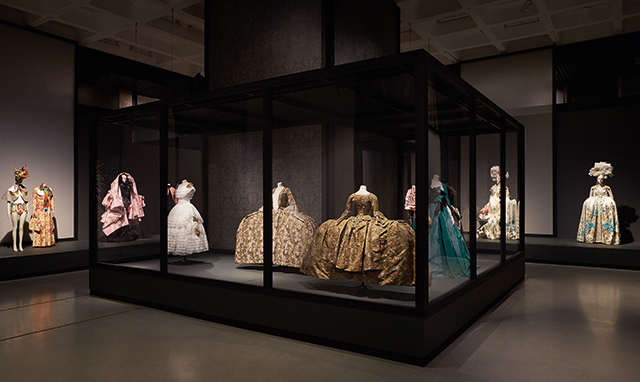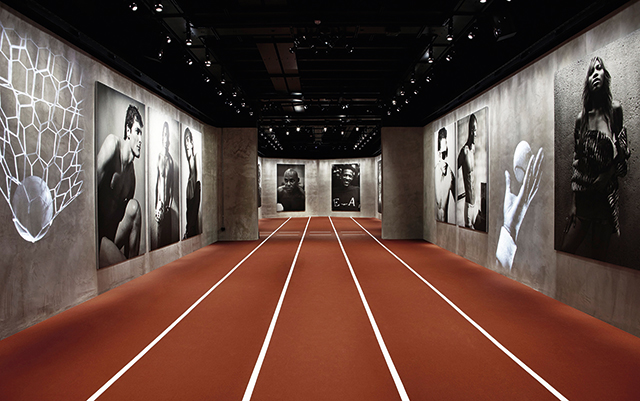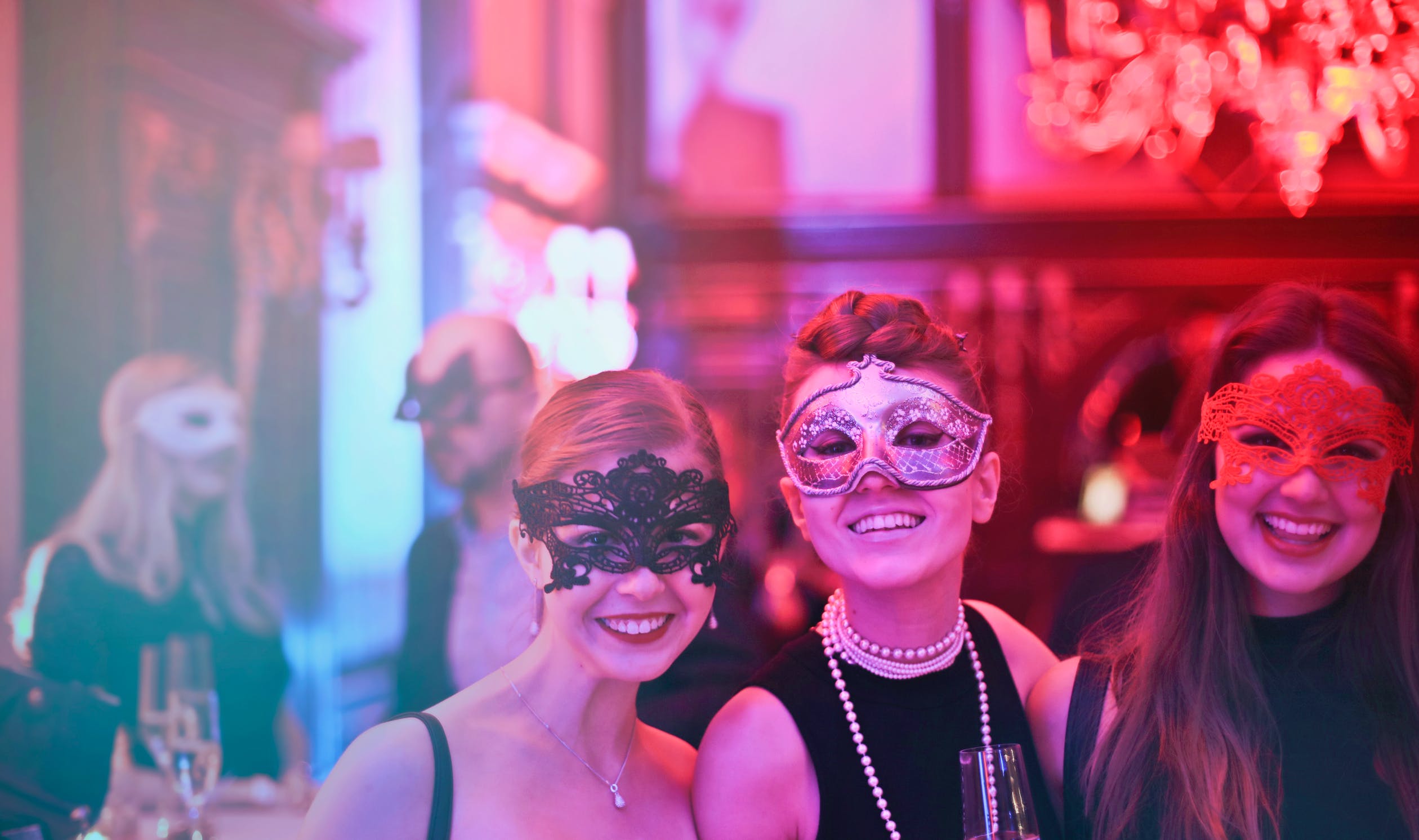With decades of experience, craft and creation behind them, many of the most celebrated fashion houses have built up extensive archives that chart their singular stories in the world of style. From sketches, fabrics and mood boards to accessories and completed garments, these holdings provide a deep well of inspiration for the brands’ designers to draw on when developing new collections. And today, with exhibitions in major institutions as well as in their own spaces, fashion houses are increasingly sharing their archives with the general public.
In 2015, Giorgio Armani opened Armani/Silos, a striking neo-industrial space in Milan, to showcase the label’s creative output. Giorgio Armani himself curated the photographs in Emotions of the Athletic Body, a recent exhibition celebrating sports. Large-format images from the company’s advertising campaigns and other sources were displayed on giant, concrete-finished slabs that, along with the running-track design on the gallery floor, conjured up a sports arena. If Armani is synonymous with Milan, Gucci is inseparable from Florence, the city where it was founded 90 years ago, and where the Museo Gucci was christened in 2011. Situated just metres from the Uffizi Gallery in a 14th-century building, the Museo hosts thematic exhibitions such as one devoted to Tom Ford’s years as the brand’s creative director and another on the recurring floral motifs in the house’s designs.
This September, two museums dedicated to legendary couturier Yves Saint Laurent will become sought-after fashion destinations. Both will be overseen by the Fondation Pierre Bergé – Yves Saint Laurent, which maintains a collection of 5,000 pieces of YSL clothing, 15,000 accessories and tens of thousands of sketches. The Musée Yves Saint Laurent Marrakech will occupy a new building designed by French architectural duo Studio KO in the Moroccan city that so captivated Saint Laurent. In Paris, a redesigned museum will open in YSL’s former headquarters at 5 avenue Marceau. The idea is that as visitors explore his salons and studio, they will understand the couturier not only as a 20th-century fashion legend but also as an artist.
Fashion, of course, has already entered art’s most rarefied province: the museum. And while it was not the first monographic show ever curated, the 2011 Alexander McQueen retrospective at the Metropolitan Museum of Art’s Costume Institute in New York took fashion exhibitions to a new level. The wildly popular show, Savage Beauty, which travelled to the Victoria and Albert Museum (V&A) in London in 2015, led the way for an ever-growing roster of fashion exhibitions in museums.
On view through 5 February at the Barbican Art Gallery in London, The Vulgar: Fashion Redefined explores the idea of vulgarity as a subjective concept expressed by garments ranging from excessively wide 18th-century dresses to Walter van Beirendonck’s Elephant skirt from the Belgian designer’s 2010–2011 Autumn/Winter collection. Dutch designers Viktor & Rolf are the subject of an exhibition at the National Gallery of Victoria in Australia (through 26 February). The show celebrates 25 years of the duo’s “wearable art,” including the canvas-and-frame dresses from their Autumn 2015 couture collection. In May, the Met’s Costume Institute is debuting a major retrospective of the creations of Rei Kawakubo, the legendary founder of Comme des Garçons. Also this spring at London’s V&A is Balenciaga: Shaping Fashion, a retrospective honouring the house’s centenary.
The worlds of art and fashion have always inspired and benefitted each other, says Mitria Di Giacomo, founder of Nexus Plexus NY, a creative marketing and media consultancy with clients in the luxury sector. “It’s a way for designers and brands to focus and to impact brand awareness without being overtly commercial,” she notes. “There’s a creative energy that happens when you bring art into the equation, and fashion brings glamour and increased exposure to the art world.”
AN INSTALLATION VIEW OF THE VULGAR AT LONDON’S BARBICAN © MICHAEL BOWLES / GETTY IMAGES
Museums and galleries do not wish to be mere shop windows for designers. Rather, institutions aim to put these creators’ work into an artistic, social and historical context that offers viewers something they will not find in stores. In a museum setting, this often means displaying the clothes alongside related works of art. The recent Missoni Art Colour exhibition at the Fashion and Textile Museum in Bermondsey in London showcased more than 60 years’ worth of looks by the Italian label as well as textile studies and paintings by Ottavio Missoni, all shown alongside works by Sonia Delaunay, Lucio Fontana and other 20th-century artists who influenced him. In a similar vein, an upcoming show at the Hepworth Wakefield in Wakefield, West Yorkshire, is the result of a collaboration between the Hepworth and London-based designer JW Anderson. Disobedient Bodies (18 March–18 June) will combine fashion pieces by legendary couturiers with figurative sculpture chosen by Anderson.
THE EMOTIONS OF THE ATHLETIC BODY EXHIBITION AT ARMANI/SILOS IN MILAN © ALBERTO ZANETTI
Earlier, in 2015, London’s Fashion and Textile Museum had collaborated with Liberty, the famed London store and fabric house to curate Liberty in Fashion. The exhibition was based on the holdings of vintage-fashion curator and collector Cleo Butterfield, who shares with the museum a particular passion for Liberty fabric and the artistic fashions of the late 19th and early 20th centuries, explains director Celia Joicey. “The history of Liberty, not only as one of the most influential English stores but also as a design studio, provides a powerful opportunity to research not only the history of fashion and textiles, but the history of retailing too,” she says. “The exhibition enabled us to explore the relationship between art and commerce in a critical and historical framework.”
Such connections will be addressed in an object-driven show opening 1 October at the Museum of Modern Art in New York. With 99 iconic creations that have had a demonstrable cultural impact – such as the classic little black dress and 501 jeans by Levi’s – Items: Is Fashion Modern? will consider production, distribution, functionality, politics and other issues beyond the designs themselves. The show reprises MoMA’s 1944 exhibition Are Clothes Modern?, the last fashion-themed show the museum organised. With growing public interest and an increasing number of fashion exhibitions around the world, MoMA could not have chosen a more relevant moment to raise the question anew.

















